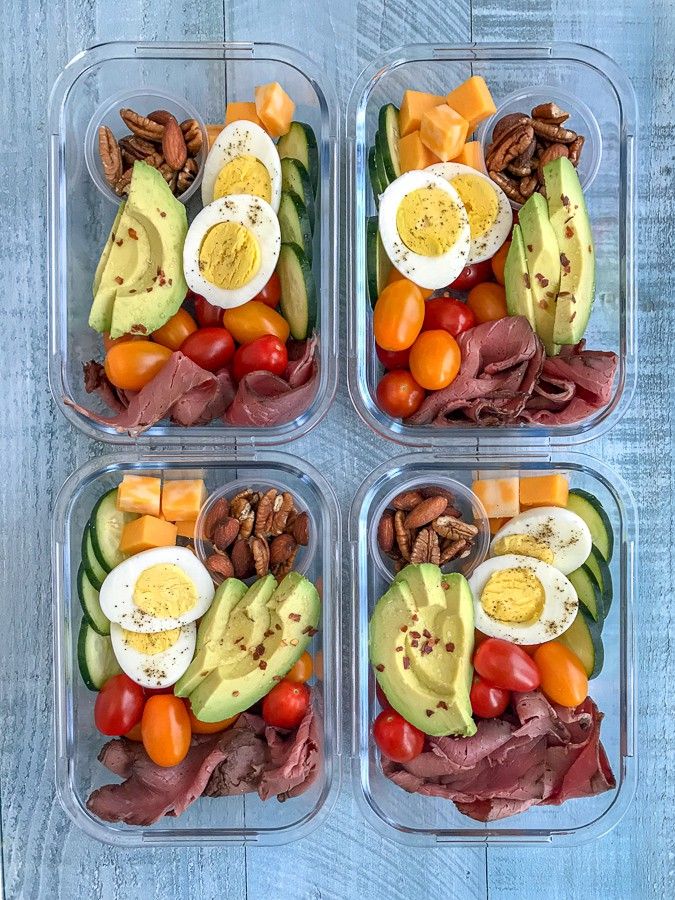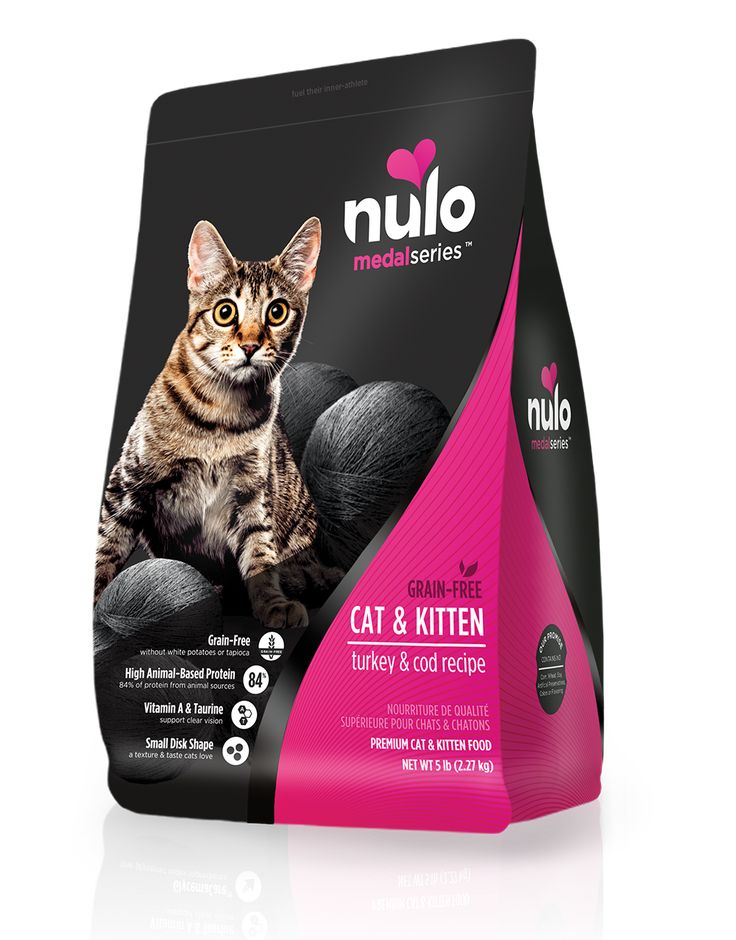Can babies eat seasoned food
Spice Up Baby's Food! Tips for Giving Baby Spices
IMAGE: Getty
Spice Up Your Baby’s World – Learn about adding Spices and Herbs to Baby’s Homemade Baby Foods
When you make your own baby food, you are able to experiment with different tastes and textures for your baby and best of all, you have the chance to use a wider variety of ingredients than what is found in commercial baby food. Most conventional brands of commercial baby foods do not incorporate herbs and spices into their jars, which is really a shame. Take advantage of the versatility of homemade baby food and use everyday spices and herbs to liven up baby’s foods. This is a wonderful way to help expand your baby’s taste buds and get her used to the tastes of the family’s foods.
Bland Baby Food is not Better!
In many countries, babies are not fed bland rice cereals as their first foods rather, they introduced to spices from the start. In India for example, they think nothing of adding a bit of curry spices to baby’s foods at a very early age. Thai families often incorporate coconut milk, lemongrass, tamarind and even chili when feeding their babies solid foods. Latino babies are exposed to taste of wonderful herbs and spices such as cumin, cilantro and even chili peppers!
When Can I Add Herbs and Spices to Baby’s Food?
A majority of pediatricians will recommend waiting until an infant is 8 months or older to introduce spices and herbs. This recommendation often has more to do with staving off digestive upsets than it does with possible allergic reactions. If your baby is doing well with foods and does not seem to have any digestive upsets, then jump right in with spices! Like any other new food, please follow the “4 day wait rule” when introducing spices and herbs. As always, please discuss the introduction and use of herbs and spices with your baby’s pediatrician.
Don’t forget, if you are a breastfeeding Mom, your little one is already tasting herbs and spices. Herb and spice flavors are transferred through breast milk, helping create and develop a taste for non-bland foods.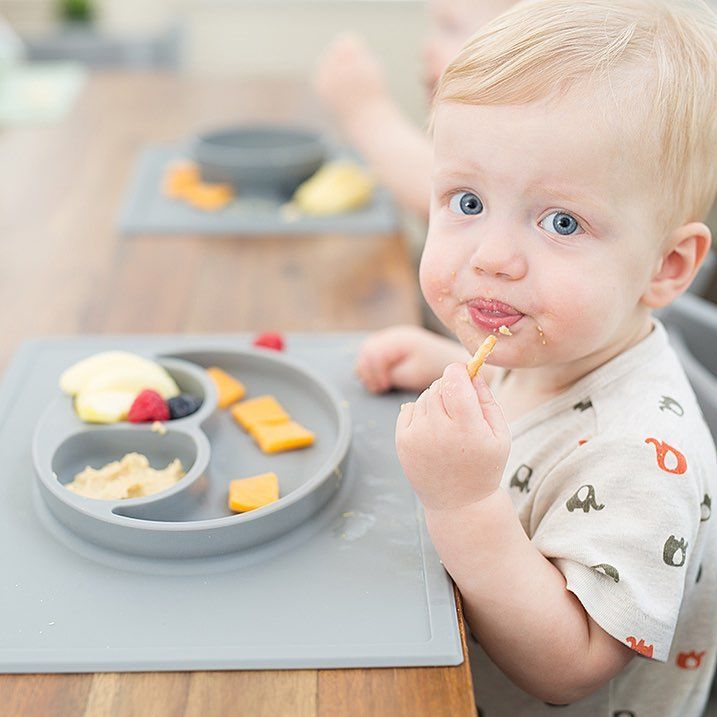
What Types of Spices and Herbs Can I Add to Baby’s Food?
Often when we think of adding something to the foods we feed are older kiddos, sugar and/or salt may be the first items to come to mind. Why is that we as parents may seldom think about adding herbs and spices to our kids food and to our baby’s food?
Fresh or dried, the types of herbs and spices you may add to baby’s foods is entirely up to you. I would recommend that you use all the spices and herbs that are typically used when cooking foods for the “big kids”. Using spices and herbs in your baby’s foods is a great way to offer interesting flavors without the use of sugar or salt. While it is never recommended to add sugar or salt to baby’s food, we always advocate adding some things to “spice up” or flavor your baby’s food. Here are a few great herbs and spices to try:
- vanilla *
- pepper
- garlic – minced or powdered
- basil
- rosemary
- dill
- oregano
- lemon zest
- ginger
- cinnamon
- mint
- nutmeg
- anise
- curry powder (yes, you may offer your older infant a dash of curry powder in her foods.
 You do need to watch for any reactions as some components of curry or even chili powder may give baby a rash)
You do need to watch for any reactions as some components of curry or even chili powder may give baby a rash)
The spices noted above can be lovely additions to your baby’s foods. If your family meals include a lot of herbs and spices then Introducing baby to spices that the family typically cooks with is important. Adding these flavorful extras does not have to wait until your little one has reached toddlerhood. BONUS! Introduction of spices early and often may one day find you thinking, “Wow, we have never used salt or sugar in any or our kid(s)’ foods!”. Imagine raising a child that is not reliant on artificial sweeteners to entice the appetite and please the tastebuds.
Spiced Up Baby Food Creations – a few examples
Try these spicy mixtures and put some baby zing into those everyday foods for baby:
Fruits:Apple(Sauce): use cinnamon, nutmeg, allspice, vanilla, ginger
Pears: use ginger, cinnamon, a drip of vanilla or even mint
Bananas: use cinnamon, ginger, allspice, vanilla
Dairy:Plain Yogurt : use with mint, cinnamon, nutmeg, vanilla, ginger, allspice, cardamom
Vegetables:Sweet potato: use with nutmeg, cinnamon and/or cardamom
Pumpkin: use with cinnamon, nutmeg, ginger and dash of vanilla
Carrots: use with basil & garlic – baked cinnamon carrots are yummy too.
Green beans: use with garlic powder
Mashed potatoes(white) : use with dill weed or garlic
Winter Squash (acorn, hubbard, butternut etc.): use with cinnamon, nutmeg, allspice, ginger
Cereals/Grains:
Pasta: use oregano, garlic, basil
Oatmeal or other cereals: use fruits, cinnamon & nutmeg, dash of vanilla
Rice (sweet) with cinnamon, nutmeg, dash of vanilla, cardamom, ginger
Quinoa (sweet): use cinnamon, nutmeg, dash of vanilla, cardamom, ginger for sweet
Quinoa (savory): use garlic powder, pepper, onion powder, basil, oregano and others
Meats:
Chicken/Turkey:
- with cinnamon and/or coriander
- with garlic powder and basil
- with lemon zest and pepper
- with basil & oregano
- with garlic and pepper
- with sage, rosemary and thyme
- with cinnamon and/or corain
Beef:
- with garlic and pepper
- with onion powder and pepper
- with plain orange zest
Try Mixing Your Own Spice Blends
Poultry Seasoning Blend
Use this seasoning blend to flavor chicken, turkey, duck, or Cornish game hens.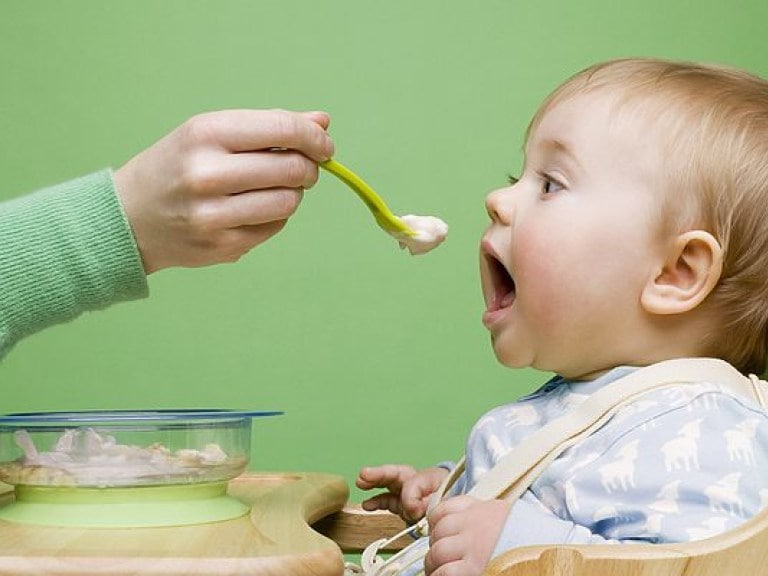 It also makes a great addition to any kind of stuffing that you serve along with your poultry dishes. If you don’t have access to fresh herbs you may substitute 1 teaspoon of the dried herb for 1 tablespoon of fresh.
It also makes a great addition to any kind of stuffing that you serve along with your poultry dishes. If you don’t have access to fresh herbs you may substitute 1 teaspoon of the dried herb for 1 tablespoon of fresh.
Ingredients:
- 1 teaspoon celery seeds
- 1 tablespoon fresh marjoram – minced
- 1 tablespoon fresh sage – minced
- 1 tablespoon fresh thyme leaves
Sweet Spice Blend
This recipe makes approximately 3 tablespoons of sweet spice blend. This blend is perfect to use throughout the holidays in all your apple and pumpkin pie recipes. This blend also tastes terrific sprinkled on top of eggnog.
Ingredients:
- 2 teaspoons ground cinnamon
- 1 teaspoon ground cloves
- 1 teaspoon ground ginger
- 1 teaspoon ground nutmeg
- 1 teaspoon ground allspice
Seeds of Knowledge – “Sweet Spices”
* A note concerning vanilla and other liquid flavor extracts
Pure vanilla and other liquid flavors/extracts, depending on the market/country where you may live, often contain a high amount of alcohol.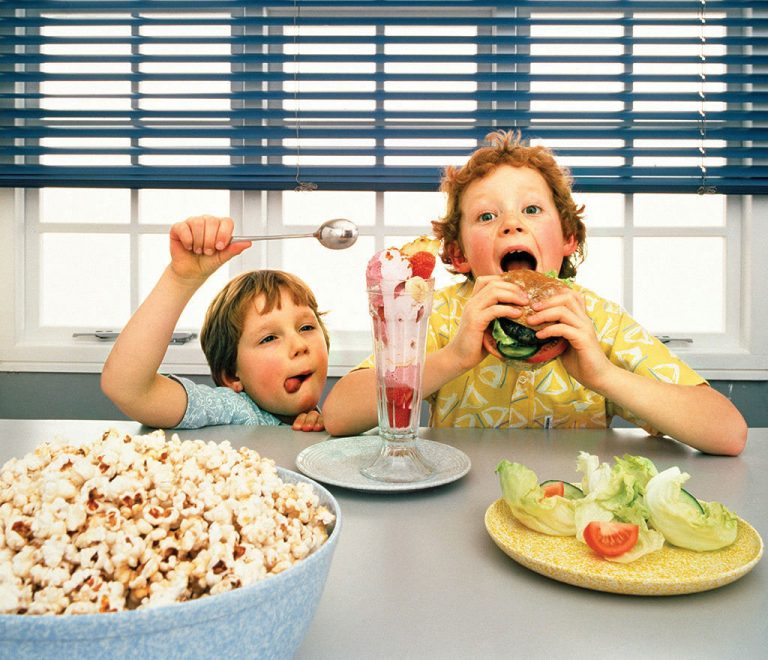 The alcohol is used to extract and preserve the flavor of the spice.
The alcohol is used to extract and preserve the flavor of the spice.
When using vanilla as a flavoring for your baby food, ensure that you are using either the vanilla bean or an essence of vanilla that is not labeled as “pure”.
You may use pure vanilla for adding to foods that are cooking or baking as the alcohol will cook off. Never add any sort of flavoring to your baby’s bottle of formula or bottle of breast milk.
Remember, always consult with your pediatrician regarding introducing solid foods to your baby and specifically discuss any foods that may pose allergy risks for your baby.
This site complies with the HONcode standard for trustworthy health information: verify here.
SHARE ON FACEBOOK SHARE ON PINTEREST
Baby food flavors: Using spices and seasoning in baby food
Baby food doesn't have to be bland – in fact, spices and seasonings are encouraged. The more variety, the better, to expand your baby's tastes. You don't have to make separate food for your baby – little ones can eat what the rest of the family is eating, as long it doesn't contain added sugars.
You don't have to make separate food for your baby – little ones can eat what the rest of the family is eating, as long it doesn't contain added sugars.
Many babies are ready for solid foods by the time they're around 6 months old, and parents often turn to such traditional first foods as infant cereals and other bland fare. Plain food isn't necessarily bad for babies, but too much of it can deprive them of important nutrients and may make them less likely to accept different textures and flavors. According to the American Academy of Pediatrics, it's important to offer your baby a variety of healthy foods.
So how do you get your baby to eat a variety of food from an early age? Here's the latest thinking on how to raise an adventurous eater.
Use spices for baby food
While babies throughout the world are dining on complex, flavorful cuisine, many babies in the United States are gumming plain, tasteless mush. The reasons we continue to serve babies bland food are open to debate, but one thing is certain – they're not based on research. In other words, a culinary walk on the wild side won't hurt your baby in the slightest.
In other words, a culinary walk on the wild side won't hurt your baby in the slightest.
And breastfed babies have actually walked that way already: Breast milk takes on the flavors of the food the mother eats. So if you dine at your favorite Indian restaurant and then nurse, your baby will also enjoy the taste of an Indian meal.
So toss some rosemary in with that squash, liven up that chicken with a dash of cumin, and give those mashed potatoes a kick with a blend of paprika and parsley. You may be surprised by your baby's reaction.
Contrary to popular belief, you don't need to banish hot spices from the highchair tray either. Of course you'll want to steer clear of anything that could irritate your baby's skin or mouth (so no habaneros yet), but there's no harm in letting your baby try mildly or moderately spicy food. For example, milder chiles, such as Anaheims and poblanos, add flavor without causing pain. If anyone raises an eyebrow, just say that babies in other parts of the world thrive on spicy food.
Cooking with herbs and spices is a great way to expand your baby's palate, but skip the sugar (see next tip) and salt when preparing food for your little one. Not only are they unhealthy, but they can also lead to poor eating habits and health problems, such as obesity, diabetes, and heart disease in childhood and later in life.
Avoid added sugars
Sugars that exist naturally in foods, such as the fructose in an apple or the lactose in cheese, are fine. But watch out for added sugars. These are sugars or syrups added to foods or beverages when they are processed or prepared. These are products like corn syrup, dextrose, maltose, and sucrose.
The U.S. Department of Agriculture and the Department of Health and Human Services recommend that children younger than 24 months not consume any added sugars.
You likely won't have problems with jarred baby food or whole-food purees you make at home. But as your little one moves on to finger foods, snacking, and eating what the family eats, be mindful that added sugars can be found in surprising places, such as in ketchup and soups.
Limit junk food
Everyone knows that junk food is unhealthy, but the negative effects can be much more serious for babies. (Unfortunately, some classic kid foods actually qualify as junk. See our list of the worst foods for babies.)
That's because even a very small serving of sugary or salty junk food is likely to make your baby feel full, leaving less room for healthier food with the nutrients necessary for brain growth and development.
Does this mean you're a bad parent if you let your little one sample a french fry or gnaw on a corner of your chocolate chip cookie once in a while? No – just don't make it a regular habit because it could encourage your baby to develop a taste for extra sugary or salty foods.
Give your little one homemade food for babies
and for grown-ups"Homemade baby food" sounds daunting, but it's surprisingly easy and doesn't require a nutrition degree, gourmet cooking skills, or fancy equipment. Making baby food can be as simple as mashing up a banana or avocado with a fork, squashing canned beans together with some garlic, or pureeing veggies steamed with spices.
And as long as you're making something healthy, your baby can eat the same food you do – no need to make separate meals! Just use a blender, food processor, or baby food maker to make food the right consistency for your baby.
Or forget the purees altogether and try baby-led weaning: Place large, soft chunks of food on the table or highchair tray and let your baby feed themself.
Make your own informed decisions about organics
"There's a lot of confusion when it comes to organics because there's no conclusive evidence that they're healthier than conventional foods," says dietitian and mom Jodi Greebel of New York. And there's conflicting evidence about whether pesticides and hormones in conventional foods are harmful.
"But the general feeling is that anything harmful will have a stronger effect on babies because of their small size – bad substances won't be as diluted as they are in an adult."
Some studies suggest a link between pesticide exposure and cancer as well as developmental problems in children, including attention deficit hyperactivity disorder and poor intellectual development.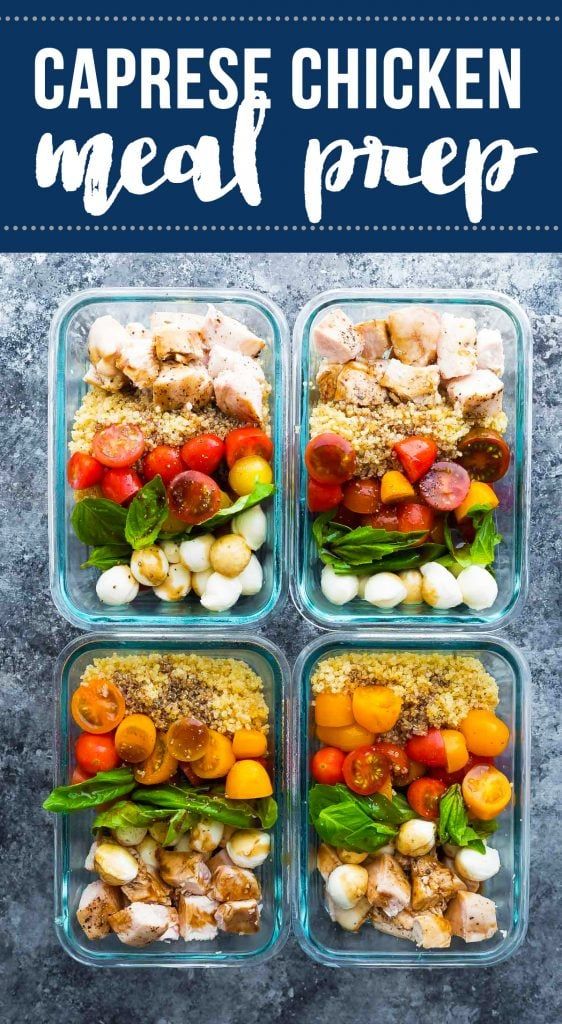 But the short-term and long-term effects of pesticide exposure are still poorly understood, and experts disagree on just how concerned parents should be. In deciding whether to feed your baby all, some, or no organic food, consider what works for your family and your budget.
But the short-term and long-term effects of pesticide exposure are still poorly understood, and experts disagree on just how concerned parents should be. In deciding whether to feed your baby all, some, or no organic food, consider what works for your family and your budget.
The organic factor also matters more with some foods than others. For example, apples, spinach, and strawberries have the highest pesticide residue levels. On the other hand, sweet corn, cabbage, and avocados tend to have relatively low levels. The nonprofit Environmental Working Group ranks fruits and vegetables from best to worst in terms of pesticide residue.
You can also buy organic meat and poultry when possible, but keep in mind that conventional meat and poultry can still be free of antibiotics and hormones. The federal government prohibits the use of hormones when raising hogs and poultry, so just check packages of beef for a label like "no hormones administered," and check meat and poultry products for labels indicating that no antibiotics were added. Visit the United States Department of Agriculture's website for more information about meat and poultry labeling terms.
Visit the United States Department of Agriculture's website for more information about meat and poultry labeling terms.
Whatever you decide, remember that general good nutrition trumps organics.
Expand your baby's tastes
Although consistency in everything from bedtime to discipline is a hallmark of sound parenting advice, a little inconsistency at mealtime can be a wonderful thing. Changing up the menu broadens your baby's palate and helps to ensure good nutrition, especially when it comes to produce. (For ideas to get you started, check out these experts' suggestions for adventurous first foods.)
Often this means heaving ourselves out of a well-worn food rut. Stuck on sweet potatoes? Shake things up with some steamed beets. Smashed peas and carrots every night? Consider pureed brussels sprouts with a little lemon juice instead. Oat cereal overload? Try quinoa cooked in vegetable broth.
Feed your baby the necessary fats
Grocery store shelves are bursting with low-fat and nonfat products – should babies be eating these? Absolutely not.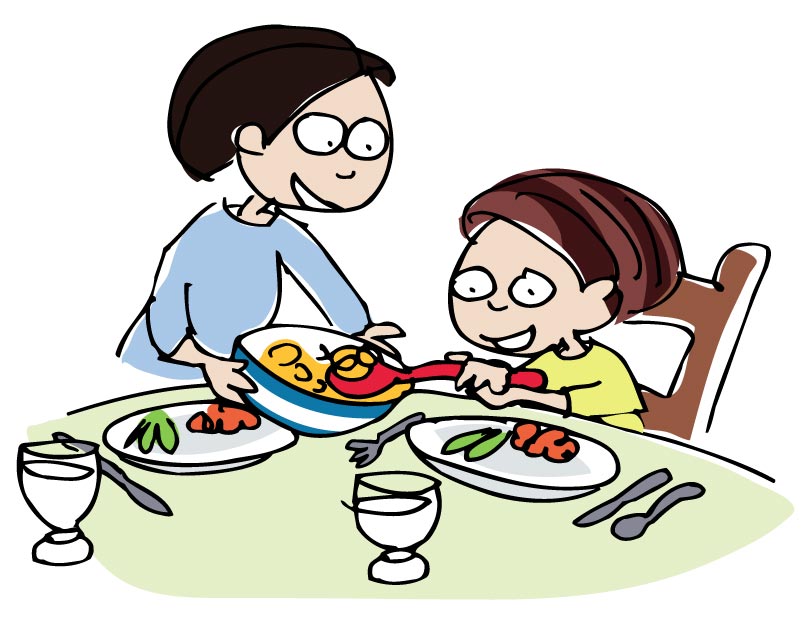 Fat is essential for babies' growth, and both breast milk and formula contain a lot of it.
Fat is essential for babies' growth, and both breast milk and formula contain a lot of it.
Experts recommend serving babies full-fat dairy products, such as cheese and yogurt, until age 2.
But don't give your baby cow's milk to drink until after their first birthday. At that point, serve whole milk (unless the doctor tells you otherwise).
The unsaturated fat in avocado makes it another wonderful choice for your baby, and the same goes for salmon and other fatty fish because they contain essential fatty acids, including omega-3s.
Offer rejected foods again – and again
When it comes to sampling new foods, babies make harsh critics. Offer a mouthful of your famous pureed green beans with dill, and your baby may swallow it reluctantly – or spit it out and push your hand away, mouth clamped shut.
Don't force the issue. For one thing, your baby may just not be hungry. Babies' appetites fluctuate, and they need less food than many of us think.
On the other hand, your baby might be turned off by the look, smell, or taste of a food. This doesn't mean you should ban it from your table permanently. If you keep trying, your baby may begin to tolerate that new food after you expose it to them a few times.
This doesn't mean you should ban it from your table permanently. If you keep trying, your baby may begin to tolerate that new food after you expose it to them a few times.
So although it can be frustrating to watch your baby reject the food you've lovingly prepared, take a deep breath and try again another day.
Demonstrate the joy of eating
"Dining with one's friends and beloved family is certainly one of life's primal and most innocent delights," Julia Child famously said.
Enjoying your food is the most meaningful thing you can do to foster a similar appreciation in your little one. Babies watch their parents and model them, so experiment with different flavors and new foods. Let your baby see you eating and savoring lots of different healthy foods. If you enjoy the simple pleasure of eating good food, chances are your baby will too.
Unfortunately, it's also easy to become frustrated and stressed about your baby's eating habits. Their fickle appetite, your concern about whether they're eating enough, and the sheer messiness can conspire to turn feeding time into a chore – or even an outright battle.
It doesn't have to be this way. There are several things you can do to make mealtime an enjoyable experience. First, make sure you have enough time so that you aren't hurrying your baby's meals. And hard as it is, accept the mess as a given – letting babies play with their food is actually good for them. They're learning about new tastes and smells while they're playing, and they're learning that eating can be fun.
To make cleaning up easier, put a splat mat under your baby's highchair. On warm days, consider letting your baby dine topless to lighten your laundry load. And take comfort in knowing that everything is washable, including your baby.
advertisement | page continues below
Diet: making a menu for an 8-month-old baby
Contents
- What to feed an 8-month-old baby: food
- Diet: when and how much should a child eat at 8 months
- Making the basis of a daily diet
- Sample menu for a child at 8 months per day: table
- Sample diet for an 8 month old baby with cow's milk protein intolerance: table
- Sample daily diet for a 6-8 month old baby
- FAQ
What to feed an 8-month-old baby: products
The nutrition of an eight-month-old baby is no longer as limited as that of a six-month-old baby. The time has come when you can use your culinary talents and imagination to indulge your baby with new tasty and healthy dishes.
The time has come when you can use your culinary talents and imagination to indulge your baby with new tasty and healthy dishes.
But remember the main rule: introduce a new food for the baby gradually and carefully watch how his body reacts. It is especially worth choosing products carefully if the child has problems with the tummy, colic or a tendency to allergies.
Each stage of a baby's development is unique and is associated with new questions from parents. Get expert advice, personalized emails and the chance to test products with us for free!
REGISTER
What can be given to a child at 8 months? What foods to add to the diet to ensure a balanced diet? Here is a rough list that you can take into account.
1. Egg yolks. The polyunsaturated fatty acids and healthy cholesterol they contain are necessary for the development of the nervous system. The yolk can be given to children from 7–8 months of age, starting with half a chicken or one quail. By this time, enzymes appear in the body to break down this product.
By this time, enzymes appear in the body to break down this product.
Important! Some people think that quail yolks are better digested and therefore they can be given to babies with allergies. But quail yolk can also cause a negative reaction. Therefore, eggs must be introduced into the diet with caution, starting with 1 teaspoon and monitoring the reaction.
2. Porridge. At the age of 8 months, a child can already eat all kinds of cereals: buckwheat, rice, oatmeal, corn and wheat. By consistency, they should be quite liquid and homogeneous. To cook baby porridge correctly, see the instructions on the product packaging and follow all the recommendations.
Learn more: Gerber® Cereals
3. Meat. Introduce solid foods gradually, giving your baby dietary varieties: chicken, veal, turkey and rabbit. The meat is rich in proteins, which are necessary for growth and development, and iron, and is also very useful for the circulatory system.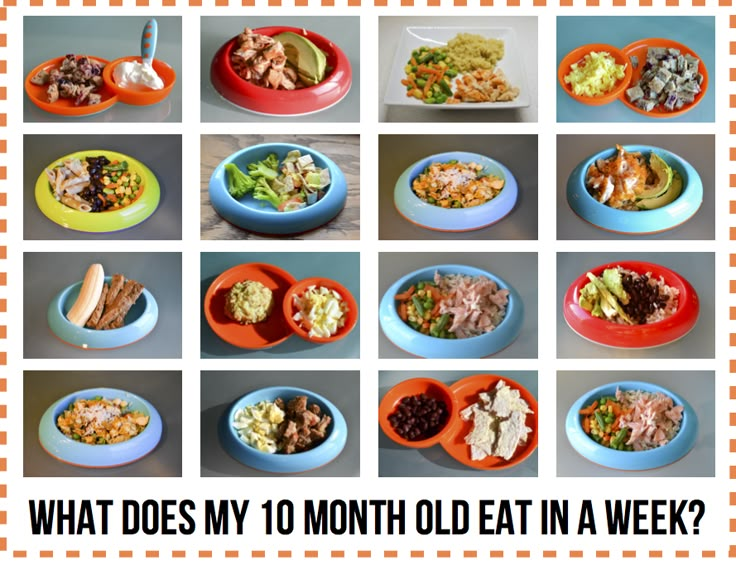 The norm of meat is about 50-70 g per day.
The norm of meat is about 50-70 g per day.
Learn more: Gerber® Meat Purees 4. Lean white fish. If the baby does not have a tendency to allergic reactions and your pediatrician sees no contraindications, let him try the fish. Due to the smaller amount of connective tissue, fish is an excellent source of easily digestible protein. It contains many minerals, amino acids, arachidonic acid, fluorine and iodine. The latter are minerals needed to strengthen bones and improve thyroid hormone production. In addition, there are a lot of omega-3 polyunsaturated fatty acids in fish, which are needed for the cells of the brain, vision, cardiovascular system and immunity of the child to develop normally. Start introducing fish into the child's menu at 8 months with a teaspoon and carefully monitor that there are no adverse events. If all is well, then give it no more than twice a week.
5. Fruit and vegetable purees. The baby has already met these products, but you can diversify the taste a little by combining vegetables with meat or different types of fruits. Learn more: Gerber® Meat and Vegetable Purees 6. Dairy products. Kefir and cottage cheese are good for the intestines, but can cause bloating, colic or allergies. Therefore, first consult with your doctor and introduce dairy products very carefully. See also: Why cow's milk is not suitable for babies?
Learn more: Gerber® Meat and Vegetable Purees 6. Dairy products. Kefir and cottage cheese are good for the intestines, but can cause bloating, colic or allergies. Therefore, first consult with your doctor and introduce dairy products very carefully. See also: Why cow's milk is not suitable for babies?
7. Vegetable decoctions and light soups. Start with vegetable broths made from potatoes and carrots, lightly seasoned with onions. For the first time, give 20-30 grams, and if the baby perceives the dish well, gradually increase the amount of soup and the variety of its ingredients.
8. Flour. You can dilute the menu with biscuit children's cookies, crackers and bread. But enter them carefully. In flour products there is a special protein of plant origin - gluten, to which the baby's fragile body can react with allergies and diarrhea.
Diet: when and how much to eat at 8 months
- If the baby is breastfed, feed him about once every 3-4 hours.
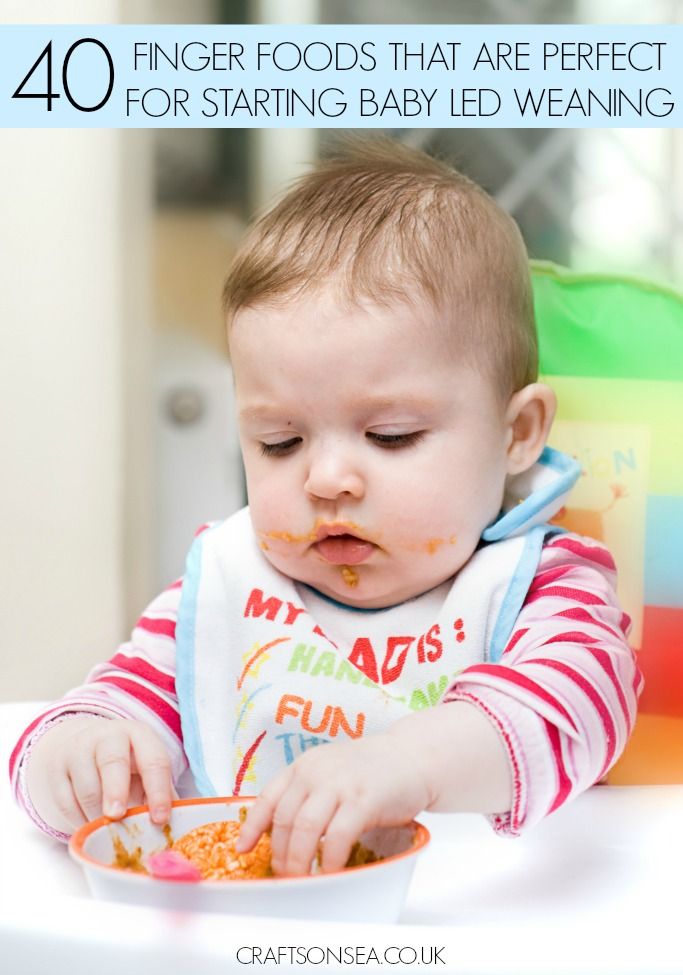
- If the baby is fed expressed breast milk, give him approximately 700 grams per day. With 5-6 meals a day, this is about 120 to 200 grams of milk per meal.
- Formula-fed (IV) babies are given 170 to 230 grams of formula 4-6 times a day. To find out exactly how much mixture you need, be guided by the instructions on the package, the recommendations of the pediatrician.
- Complementary foods are best included in the menu of a child at 8 months three times a day: it can be one teaspoon per sample or 50-180 grams of already familiar food.
Important! The calculation of servings and the number of feedings depends on the individual characteristics of the development and needs of the child. Therefore, first of all, be guided by the recommendations of your pediatrician and the needs of the baby.
We form the basis of the diet for every day
At 8 months, a baby needs a sufficiently varied and high-calorie food so that an actively growing body receives a sufficient amount of nutrients. Divide the daily food intake, which is approximately 1000–1200 ml, into 5–6 doses at intervals of 3.5–4 hours: early breakfast, breakfast, lunch, dinner and feeding before bedtime. If the baby is not full on complementary foods, supplement with breast milk or formula if the baby is formula-fed.
Divide the daily food intake, which is approximately 1000–1200 ml, into 5–6 doses at intervals of 3.5–4 hours: early breakfast, breakfast, lunch, dinner and feeding before bedtime. If the baby is not full on complementary foods, supplement with breast milk or formula if the baby is formula-fed.
Tip! Do not salt or sweeten food. Introduce the baby to sugar and salt not earlier than 12 months, but better later.
The list of allowed foods at 8 months of age is quite extensive, which gives you room for culinary experiments. Use this table to create a menu for the week, changing types of cereals, alternating purees and juices from different vegetables and fruits, adding new foods or additional ingredients to dishes already familiar to your baby. For example, if the crumbs are already fed up with some kind of porridge or mashed potatoes, improve the recipe a little - add a spoonful of vegetable or butter, or pieces of fruit. And the child will eat again with pleasure.
And the child will eat again with pleasure.
See also: Breastfeeding: first steps after childbirth
Important! If the child is allergic, add something new to the diet with extra care. Especially food rich in animal proteins - cottage cheese, kefir, yolks, milk porridge, fish. Before offering them to your baby, consult a pediatrician.
Sample menu for a child at 8 months per day: table
I feeding
6 hours
Breast milk or infant formula
200 ml
II Feeding
10 hours
Dairy-Poshenic porridge Gerber® with a banana and mango
Cream oil
Boiled chicken eggs
PROWLED MOLOCE or children's milk mixture
9002 ½ tsp½ pc.
50 ml
III feeding
10 hours
Gerber® vegetable-meat puree “Tender vegetables with veal”
Vegetable oil
Gerber® clarified apple-pear juice
Complementary breast milk or infant formula
170 g
approx. ½ tsp.
½ tsp.
½ pc.
50 ml
IV feeding
18 hours
Fruit puree Gerber® “Apple with forest berries”
Baby cookies
Kefir
Domestic milk or children's milk mixture
70 g
1-2 pp.
40 ml
100 ml
V feeding
22 hours
Breast milk or infant formula
200 ml
Sample diet for an 8 month old baby with cow's milk protein intolerance: table
Gerber® Dairy-Free Wheat Oatmeal
Vegetable Oil
Gerber® Apple & Peach Fruit Puree
Gerber® Clarified Apple Juice
130 g
approx. 1 tsp.
70 g
30 ml
III feeding
10 hours
Gerber® vegetable “Color cabbage and potatoes”
Vegetable oil
Gerber® Melo Rabbit
Gerber® Veles “Brockoli”
170 g
approx. 1 tsp.
50 g
70 g
IV feeding
18 hours
Vegetable oil
Gerber® Tender Turkey Meat Puree
Supplementation with breast milk or formula for infants with cow's milk protein intolerance
Breast milk or formula for infants with cow's milk protein intolerance
about 1 tsp.
30 g
100 ml
200 ml
Important! To create a menu for a child, calculate the size of portions and the number of feedings, first of all, be guided by the recommendations of your pediatrician, the individual needs and characteristics of your baby's body.
FAQ:
1. How much should a baby eat at 8 months? An 8-month-old baby needs a portion of food per day, which is equal to about ⅛ of body weight. This is 1000-1300 ml of food, excluding water, juices, children's tea. Divide this amount by about 5 feedings and you will get a single serving of 200-210 ml.
2. When can cow's and goat's milk be added to complementary foods? According to WHO recommendations, whole cow's and goat's milk should not be given to children until at least 9months, and possibly up to 12 months. In order not to deprive the baby of the benefits of dairy products, replace with milk-baby kefir, yogurt, cottage cheese. But before introducing dairy into the menu, consult with your pediatrician.
But before introducing dairy into the menu, consult with your pediatrician.
3. If the baby has allergies, what should I do? Atopic dermatitis, redness, itching are all signs of intolerance to some substance or food. If, after introducing a new food, you notice any of these symptoms, you need to eliminate the allergen from the diet. If you experience severe symptoms: swelling, vomiting, diarrhea, difficulty breathing, consult a doctor immediately. The pediatrician will select the therapy for the baby: it can be a special diet or medication.
Related articles: The kid refuses new foods
We eat right and without mistakes
Foods containing iron
Is it convenient for children to get used to spicy food?
Food causes anxiety in children, especially when they start eating or try everything. But in this "only" is it convenient that they eat spicy ? We're not talking about giving them chili to taste, but about making dishes as spicy as we adults eat them.
Consider gastronomic culture in which we feel immersed, the season of the year and local products. We recommend that if spicy is a regular part of the diet in your home and area where you live, your child will naturally get used to it. But, if it's not, you won't even miss out.
Index
- 1 Food that we can consider spicy
- 2 When can they start eating?
- 3 Pros and cons of spicy food
Food that we can consider spicy
Boys and girls, like adults, love delicious food with rich flavor. In fact, you'll notice that there are nuts and snacks flavored with these spicy flavors, and they're probably your kids' favorite. Don't forget to adapt the recipes, for example, to Mexican cuisine. If you are going to make cheddar cheese stuffed jalapenos, it is best to completely remove the seeds and white veins contained in this vegetable.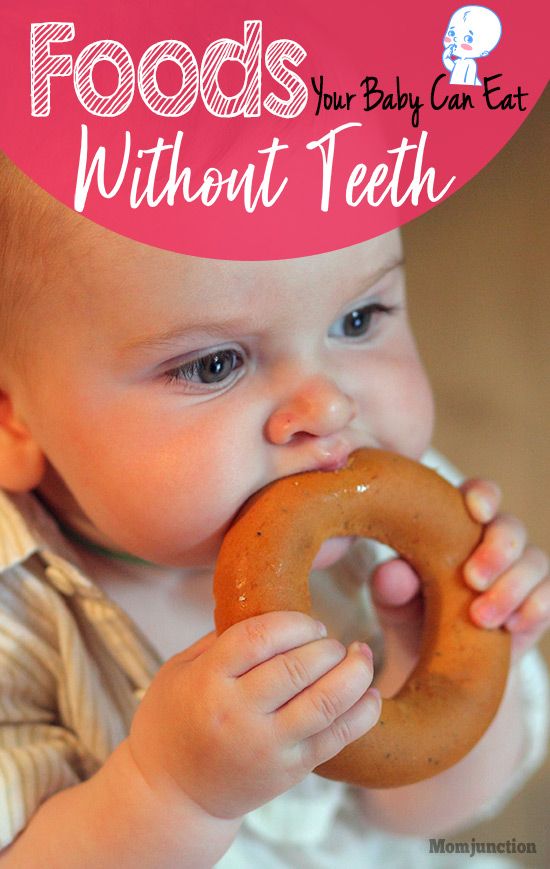
One of the foods we consider spicy is which is so traditional in our stews and dressings. It has antiseptic properties, which at the same time avoid food poisoning. Other salty foods that we use in the kitchen that can be considered spicy are: onion , radish, cinnamon, cayenne or chili pepper, white pepper, black pepper and pepper . And to a lesser extent turmeric, nutmeg, ginger, cloves, cardamom...
If your son tolerates these scents well, and it doesn't cause reflux or stomach pain, nothing happens. By itself, the spice has many benefits for the body. Also for children's body.
When can they start eating?
Some pediatricians talk about introducing strong and spicy foods year after year. But it can lead to certain allergies. However, as we said at the beginning, everything will depend on the gastronomic culture in which you will develop. Children usually begin to eat spicy flavors. from the age of three.
from the age of three.
Once you start introducing kids to spicy or delicious foods, do some follow-up . Perhaps these products cause irritation of the mucous membrane of the stomach or intestines or heaviness in the child. In this case, children should stop taking acute.
Remember that while breastfeeding, if you overeat spicy foods, they will pass into your milk. What can develop spice intolerance on the part of the baby.
Pros and cons of spicy food
As a rule, spicy food helps fight colds, clears mucus from the lungs, improves the functioning of the digestive system. They also eliminate intestinal gases and intestinal parasites. So, in principle, there is nothing against your child eating spicy food.
If your boy or girl has problems with urination, or any other infection of this type, it is not recommended to sharpen it at this time, because it will sting more when you piss.









